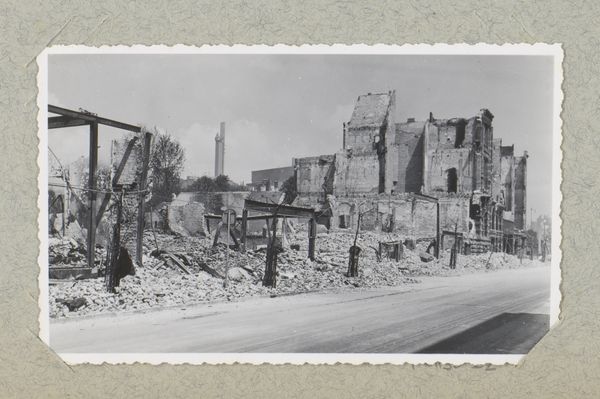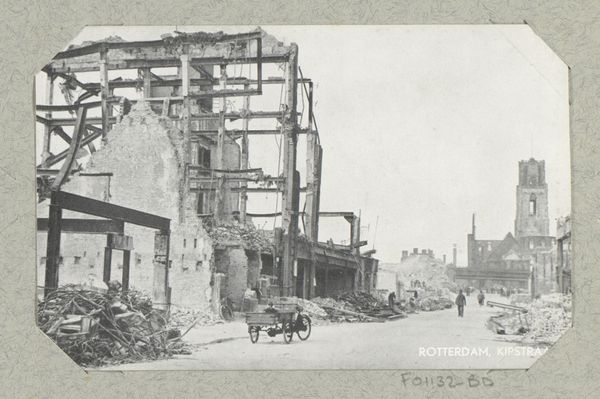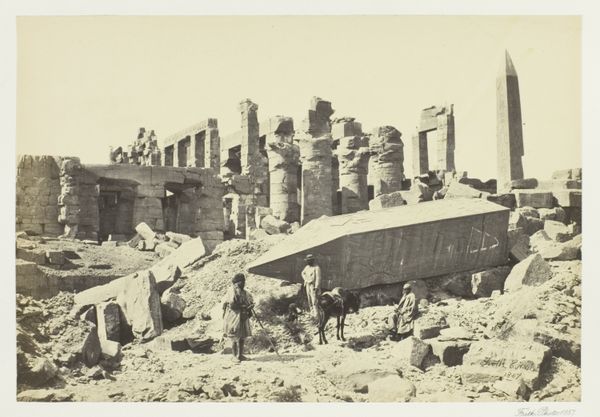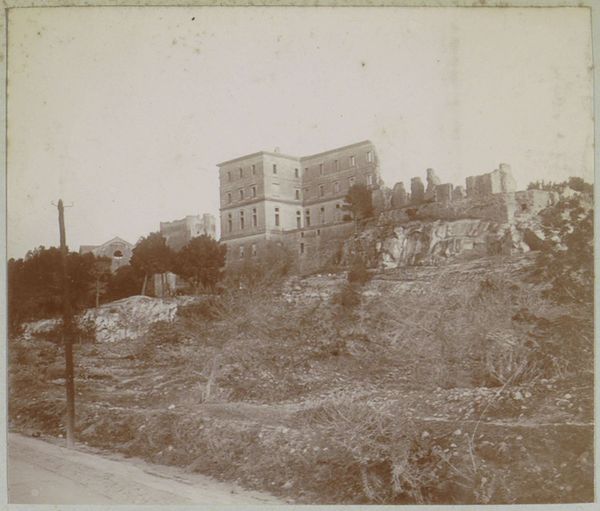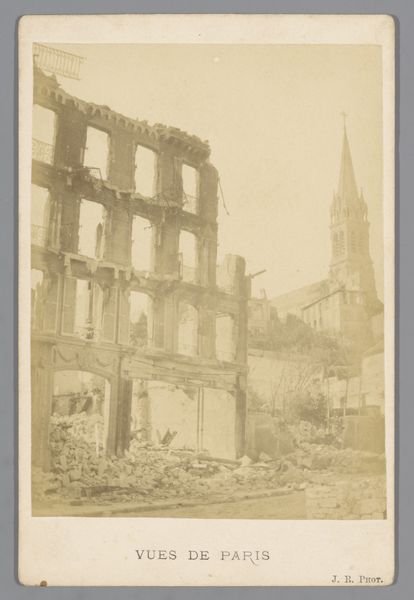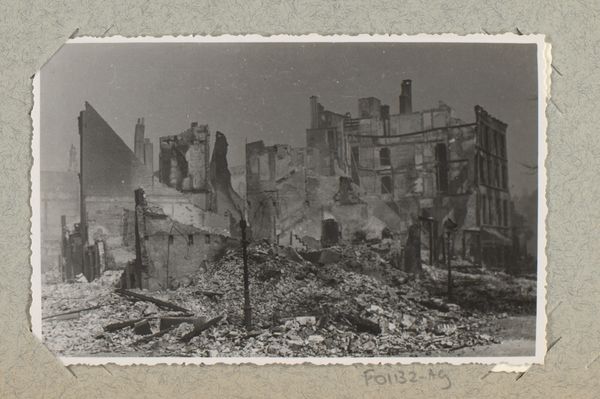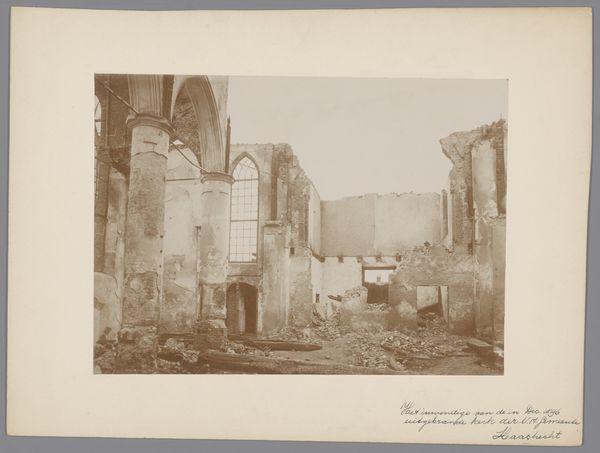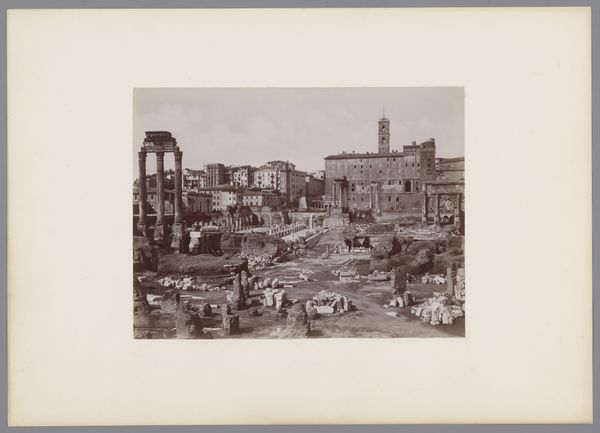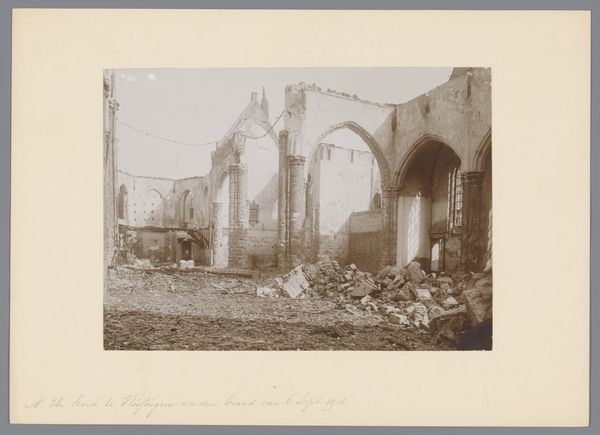
photography, gelatin-silver-print
#
war
#
landscape
#
photography
#
gelatin-silver-print
#
cityscape
#
modernism
#
realism
Dimensions: height 91 mm, width 141 mm
Copyright: Rijks Museum: Open Domain
Curator: This gelatin silver print, taken by J. Nolte, depicts the devastation wrought upon Rotterdam. It's titled "Ruïne van het telefoonkantoor aan de Botersloot te Rotterdam", and was created sometime between 1940 and 1945. Editor: My initial reaction is one of stark desolation. The ruined building dominates the frame, a skeletal structure against a pale sky, hinting at the brutality and comprehensive erasure of war, an emptiness which engulfs its surrounding context. Curator: Nolte’s image offers a potent example of war photography functioning as historical record. The choice to document the ruin of the telephone office, a central point of communication, speaks volumes about the disrupted infrastructure and the intended silencing effect of bombings in Rotterdam during the war. Editor: Absolutely, the targeting of such infrastructure wasn’t just strategic; it was symbolic. By severing communication lines, you isolate a community, dismantling not just the physical structure but the very fabric of their connection. Consider too, the labour inherent in telephone exchange; mostly carried out by women and overwhelmingly impacting their labour conditions post bombardment. Curator: The figures in the foreground, almost dwarfed by the scale of destruction, add a layer of somber reality. Their presence is an implicit comment on the immediate aftermath; a stark visual indicator of their forced removal from their jobs and, sometimes, lives. It pushes me to reflect on the sociopolitical forces that shape the production of this image. Editor: This resonates deeply, making me think of how even photographic "realism" is a construct. Nolte’s decision to frame the image in this way, positioning the laborers among this waste landscape, shapes our understanding of their agency. Where do we position accountability within these contexts of wartime erasure and how can photographs become instruments of memorialization? Curator: By photographing the remnants of modernism crushed into heaps, Nolte unwittingly captured the limits of that modernist project: even progress has the capacity to destroy. It really invites us to ponder the broader narrative of conflict. Editor: Indeed. Reflecting on the politics embedded within such images, and using historical awareness can guide future progress and resilience. Nolte has provided just that for us, today.
Comments
No comments
Be the first to comment and join the conversation on the ultimate creative platform.
